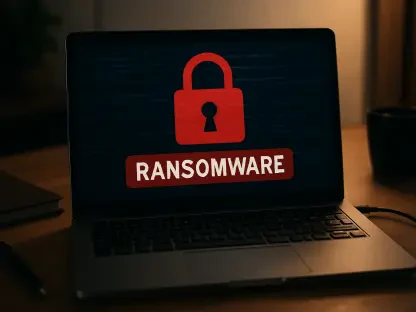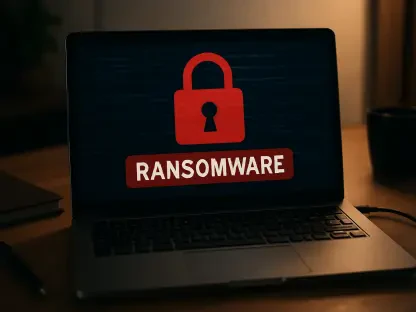Introduction to a Growing Threat
Imagine a marketplace where breaking into a corporate network costs less than a high-end smartphone, a chilling reality that exists on the dark web where initial access brokers (IABs) sell entry points to compromised systems at alarmingly low prices. These underground services have become a cornerstone of modern cybercrime, enabling attackers of all skill levels to launch devastating campaigns like ransomware or data theft with minimal effort. The affordability and accessibility of such markets pose a severe challenge to global cybersecurity, as they lower the barrier for malicious actors to infiltrate organizations. This summary explores the mechanisms behind these cheap access markets, shedding light on their impact and the urgent need to address this escalating threat.
The significance of this issue cannot be overstated. As cybercrime evolves into a service-based economy, the availability of inexpensive access tools amplifies the risk to businesses, governments, and individuals alike. Understanding how these markets operate is critical to developing effective defenses and disrupting the supply chain of cyber threats. This research summary delves into the underground economy of IABs, drawing on comprehensive data to reveal trends, implications, and potential solutions to a problem that continues to grow in scope and sophistication.
The Underground Economy of Initial Access Brokers
The dark web hosts a thriving ecosystem where IABs act as middlemen, offering pre-compromised access to networks for a fraction of the effort it would take to breach them independently. These brokers specialize in penetrating systems, then selling the entry points to other cybercriminals who can exploit them for larger attacks. The core issue lies in the affordability of these services, which allows even novice threat actors to participate in high-stakes cybercrime without needing advanced technical skills.
A key factor driving this market is the ease of access to such services. With prices often tailored to the perceived value of the target—sometimes based on a victim organization’s revenue—brokers make their offerings appealing to a wide range of buyers. This dynamic not only fuels the spread of malicious activities but also creates a resilient underground economy that adapts quickly to disruptions like law enforcement interventions.
Combating this market presents a formidable challenge. The decentralized nature of dark web forums, combined with the anonymity of transactions, makes it difficult to track or dismantle these operations. As a result, the accessibility of IAB services continues to empower cybercriminals, necessitating innovative strategies to disrupt their business model and protect vulnerable systems.
The Rise of Affordable Cybercrime: Context and Significance
The market for initial access has emerged as a pivotal element of the broader cybercrime landscape, providing the foundation for many sophisticated attacks. A detailed six-month analysis conducted from July 1 to December 31 of last year across three major dark web forums—Exploit, XSS, and BreachForums—highlights the scale of this issue. This study reveals how IABs have transformed cybercrime into a low-cost, high-impact enterprise that threatens organizations worldwide.
The democratization of cyber threats through affordable access is a pressing concern. By reducing financial and technical barriers, these services enable a broader pool of threat actors to engage in activities like data exfiltration and ransomware deployment. This trend increases the frequency and severity of attacks, putting immense pressure on cybersecurity teams to stay ahead of evolving tactics used by malicious actors.
Beyond individual organizations, the broader implications are significant. The variety of access options and the persistent nature of these underground markets expand the overall threat landscape, challenging both defensive measures and law enforcement efforts. Addressing this issue requires a deeper understanding of market dynamics and a coordinated approach to mitigate the risks posed by such accessible cybercrime tools.
Research Methodology, Findings, and Implications
Methodology
The research focused on a meticulous six-month examination of three prominent cybercrime forums—Exploit, XSS, and BreachForums—to uncover patterns in the IAB market. Data was collected by monitoring listings, transactions, and interactions on these platforms, providing a comprehensive view of how access is sold and priced. This approach aimed to capture real-time trends in an environment known for its rapid evolution and secrecy.
Analysis techniques included categorizing access types, tracking pricing structures, and identifying key players within the forums. By aggregating and cross-referencing data points, the study mapped out the economic and operational frameworks that sustain these illicit markets. Such methods ensured a robust dataset to draw actionable insights about the underground economy.
Findings
The results paint a stark picture of affordability in cybercrime, with the average base price for initial access pegged at around $2,700. Notably, 39% of transactions fell within the $500 to $1,000 range, demonstrating how accessible these services are to a wide audience. This pricing structure makes it feasible for even low-budget attackers to acquire entry points into valuable networks.
Diversity in offerings further amplifies the threat, as 71.4% of brokers provide multiple access methods or bundled packages with varying privileges. Among the most common types, VPN accounts lead at 23.5% of sales, followed by remote desktop protocol (RDP) access at 16.7%, with domain user accounts also prominent. These options, especially VPNs, enable stealthy infiltration by blending with legitimate traffic, complicating detection efforts.
The resilience of these markets is evident in platforms like BreachForums, which continue to operate despite repeated law enforcement takedowns. A standout observation is the dominance of prolific sellers like IntelBroker, who accounted for 19.05% of sales on the forum during the study period. This persistence underscores the difficulty in curbing such underground activities through traditional means.
Implications
Affordable IAB services drastically lower the technical threshold for engaging in cybercrime, allowing less-skilled actors to execute complex attacks. This accessibility fuels a surge in ransomware campaigns and data breaches, as buyers can easily acquire the means to penetrate networks without developing their own exploits. The impact on global cybersecurity is profound, as threats multiply in both frequency and sophistication.
Organizations face heightened risks due to the use of legitimate credentials and covert access methods like VPNs by attackers. Such tactics often bypass conventional security measures, enabling lateral movement within networks and prolonged undetected presence. This stealthy approach complicates incident response and increases the potential damage from each breach.
On a societal level, the proliferation of IAB markets calls for stronger defenses and international collaboration to disrupt these operations. The ease of acquiring access tools not only endangers businesses but also critical infrastructure, highlighting the need for proactive measures. Addressing this issue demands a multifaceted strategy that combines technological innovation with policy enforcement to tackle the root causes of this underground economy.
Reflection and Future Directions
Reflection
The study offers critical insights into the IAB market, illuminating the scale and affordability of access services on the dark web. However, balancing detailed data collection with the fast-paced evolution of cybercrime forums remains a challenge. The dynamic nature of these platforms means that findings can quickly become outdated, requiring constant updates to maintain relevance.
Limitations also exist in capturing the full scope of underground activities. Many transactions likely occur in hidden markets or through private channels not covered in the analysis, potentially underrepresenting the true scale of the problem. Additionally, unreported sales further obscure the complete picture of this illicit trade.
Expanding the research scope could provide deeper understanding, such as integrating real-time monitoring tools to track forum activities as they unfold. Analyzing buyer behavior and motivations might also reveal new patterns, offering a more comprehensive view of how these markets function and evolve over time.
Future Directions
Further investigation into emerging access methods and technologies used by IABs is essential to anticipate new threats. As brokers adopt innovative ways to evade detection, staying ahead requires continuous study of their tactics and tools. This proactive approach can help in developing countermeasures before new methods become widespread.
Exploring the effectiveness of law enforcement strategies presents another avenue for research. Assessing past interventions and their impact on market resilience could inform more robust approaches, including potential partnerships with private sector entities. Such collaborations might enhance resource sharing and intelligence gathering to dismantle these networks.
Lastly, examining the long-term impact of IAB services on organizational security is vital. Understanding how these access tools shape evolving threat landscapes can guide the development of adaptive defenses. This focus on sustained impact ensures that cybersecurity measures remain relevant amid changing attack vectors.
Combating the Accessibility of Cybercrime: A Call to Action
Looking back, the research painted a concerning portrait of initial access broker services as both affordable and diverse, with prices frequently below $1,000 and access types like VPN and RDP dominating transactions. The persistence of forums like BreachForums, even after significant law enforcement actions, highlighted the enduring nature of these underground markets. These findings underscored the accessibility of cybercrime tools as a persistent challenge that demanded urgent attention.
Moving forward, actionable steps must include bolstering cybersecurity frameworks with advanced threat detection systems capable of identifying stealthy access methods. Organizations should prioritize employee training to recognize phishing and other entry tactics exploited by brokers. Additionally, fostering international cooperation among governments and private entities can enhance efforts to track and disrupt these markets at their source.
Beyond immediate measures, a sustained focus on innovation in defensive technologies offers a path to outpace cybercriminals. Investing in research to predict and counteract emerging access trends will be crucial. By building a collaborative, forward-thinking approach, the global community can work toward diminishing the allure and impact of cheap access markets, safeguarding digital environments for the future.









